What is Marketing’s “Rule of 7”?
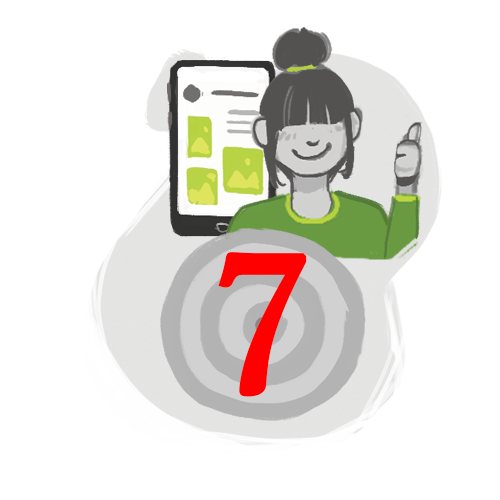
Introduction: The More Frequent the Ads, the More Frequent the Sales
We’ve mentioned in previous posts that customers online need to see your ads multiple times before there are convinced your products are the solution to their problems. We’ve referenced the number “7” in previous articles for the number of times a customer notices your ads before seriously considering buying and boosting your sales.
Where does the “rule of 7” come from in marketing?? Is it true? How does it apply to ecommerce?
This post explores the significance of the “Rules of 7” and how it can be applied to drive traffic to your store, increase your sales, and offer a clearer framework for your marketing strategy!
“Rule of 7” – Half-Myth, Half-Truth
For history buffs, it’s interesting to note that the “rule of 7” came from 1930s Hollywood movie execs. Their marketing research showed moviegoers, on average, needed to see a movie poster 7 times before buying tickets.
So, while the “rule of 7” holds weight in that regard, online shopping and ecommerce are a far different animal from 1930s America! Customer tastes have changed, the medium of advertising has changed, and so effective promotional methods have evolved, as well.
At the same time, the concept that customers usually need multiple exposures to your ads before purchasing is undeniably true. The more times potential customers see your ads, the more likely they are to buy from your store, on average. This could mean seeing a mobile ad, Facebook ad, and your inclusion on the Google search engine – or some other combination of media exposure. Regardless, it’s best to picture that your ads become part of the “mental steps” a customer takes when picking what to purchase.
Overall, the “rule of 3s” may apply better to the Internet age. After three or more exposures to your advertisements, customers become acutely aware of your brand, and the majority begin considering your products a viable solution to their problems. Increased sales will follow!
Standing Out in a Flood of Information
The difficulty of the ecommerce ecosystem is how customers are flooded with ads and information constantly. this flood of information means your name and brand needs to pop up multiple times, ideally in varying formats, before the customer begins to consider your products as a viable solution to their problem.
To maximize the results of your marketing campaign, you cannot just put the same ads in the same place over and over. Depending on customer, you need to communicate in different mediums with different approaches. For example, maybe you start with a Facebook informational ad campaign, collecting some user emails through retargeting software. You use the data collected from the first ad campaign to specifically retarget the customer with a different ad that more directly responds to their interests. Finally, you send the customer an email with a special “first time user” deal. After that, you hopefully have pushed the customer along the sales funnel to the point they regularly visit your site for good deals. Over time, you become a regular step in their “mental process” for buying new products.
The “Rule of 7” Re-Enforces the Importance of Ad Retargeting
We have spoken a lot about ad retargeting here at Ad360 – and for good reason. It is mind-boggling the number of good companies, selling great products, that shoot themselves in the foot by not taking advantage of retargeting. After one view, chances are the customer totally forgets the name of your business… but the captured data doesn’t forget! From there, you can continue to fine-tune your message, catering to the user at each step of their mental process until they feel comfortable making a purchase from your site.
Conclusion: Tailoring your Ads to Respect the “Rule of 7”
Switching up your ad banners and promotional outreach at every step of the customer’s mental process can be difficult by yourself. One false move, and they may jump off the wagon, ignoring your future customer outreach efforts.
If you feel you could use some support staying on track with your customers until they finally purchase from your store, try a free demo by Ad360 today! We provide best-in-class ad retargeting services, empowering your business to boost sales through media exposure across all devices, social media, and search engine. Your customers will be impressed with the variety of outreach, and you can control every campaign under one roof – Ad360. 😊
Choice Overload is hurting Conversions
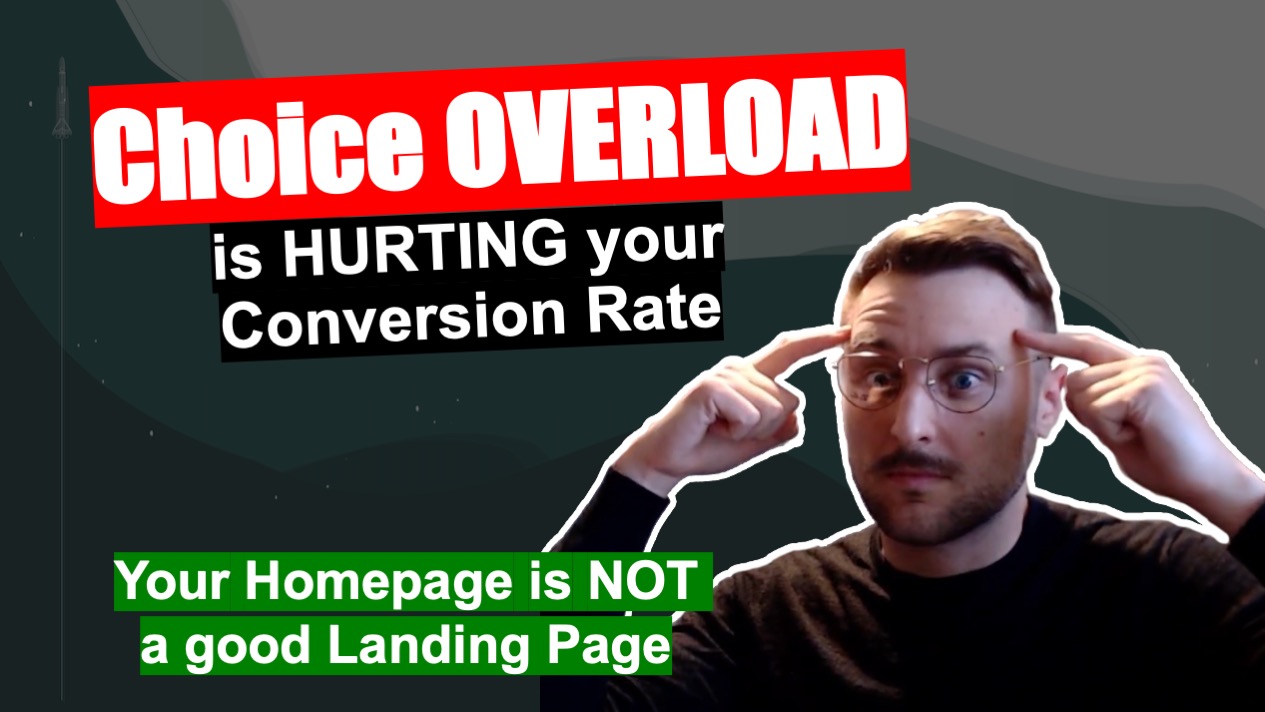
Welcome to Ecommerce Success by Ad360, the channel where we share tips, news, best practices to help business owners be happy, productive, and successful!
A Landing Page is where users land after clicking on an ad. Usually, Landing Pages are laser-focused towards your main goal in that context. If your website sells different categories of products, appealing to various audience segments, you should probably have multiple Landing Pages, with each targeting a specific audience segment and/or product.
The reason why the Homepage doesn’t make for a good landing page is that it usually contains varied content. Perhaps counter-intuitively, having more options isn’t necessarily a way to increase the probability of your website visitors to take an action.
Quite the contrary actually says the Choice Overload paradox: having too many options to choose from deters some users from making a choice at all.
For this reason, a Homepage containing a lot of different products may have a lower conversion rate than a dedicated landing page, meaning that in most cases, you don’t want to bring users who click on your ads towards your Homepage.
Wishing you a lot of success!
5 Stages of Customer Awareness
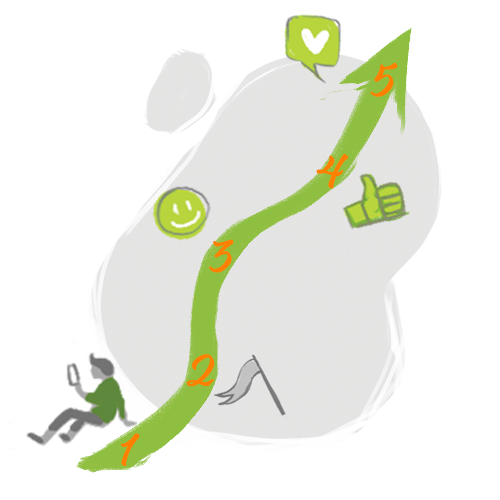
Introduction: Leading your Customer from “Total Ignorance” to “Problem Solved”
Picture that, at its best, advertising seamlessly enters the conversation of their customers. It’s not disjointed, it’s not ill-timed, and it provides a solution to a problem they’ve maybe considered… or might be totally unaware of.
Here enters the difficulty of effective marketing: each customer you reach out to may be at a different level of “customer awareness.” Does the customer already know you exist, and they are in the process of comparing you to competitors? Or are they so behind the 8-ball that they don’t even know they have a problem?
Inspired by marketing guru Eugene Schwartz, this blog post explores how properly framing the “five levels of customer awareness” brings precision and personalization to your customer outreach. It is essential to make sure you don’t come across as “spammy” or “pushy” while marketing your services online.
Different Segments of the Audience Require Different Messaging
We’ve made clear in previous posts that custom audiences are essential for honing your online ad campaigns. However, we haven’t yet discussed that the level of “product awareness” everyone has may vary wildly. You don’t want to send the same ad to a customer regular as you do to someone who has never even considered your solution to the problem. It will either come across as pushy, repetitive, or go directly over their heads. Below are the five stages of customer awareness listed out:
1. Unaware:
- The customer is completely unaware or unable to frame their problem. You can help by providing educational, entertaining, and engaging content to make them aware of the issue!
2. Problem Aware
- The customer now knows there’s a problem, but are stuck or too busy to consider solutions. Emphasize the priority of the issue and how they could minimize their stress by considering a solution!
3. Solution Aware
- Here is the transition point. You tell the customer that your store has the proper solution to the problem you framed earlier.
4. Product Aware
- Now, the customer is fully engaged with solving their issue… but they haven’t decided between you and other competitors. You need to expand on your product’s benefits, and why buying from your store will exceed their expectations.
5. Most Aware
- These are customer regulars who appreciate genuine outreach and “special offers,” like VIP coupons and the sort. Because they have a proven track record of buying from your store, feel free to sweeten the deal for them!
Real-Life Example of Ad Messaging Through the “5 Stages of Customer Awareness”
Let’s stay you’re a hair styling company selling unique, all natural hair products. The customer, using the same cheap hair products for years now, is totally unaware of the damage being done to their hair. So, you start your targeted ad campaign with the following intent:
A. Make customers aware of the problem with the chemicals in certain hair products – such as sulfates, parabens, or formaldehyde. The Ad banner could read, “Chemicals in common shampoos could be doing damaging your hair and health!”
B. Offer a solution. It could read, “How to pick the perfect hair products for your type of hair”
C. Now it’s time to push your e-commerce site! The ad banner reads, “Check out our website for the most healthy, nourishing products for each hair type!”
D. At this point, the customer’s cursor is hovering over “click to buy” – You may want to offer these folks a deal-sweetener to close the deal. This could include free shipping on their first purchase or maybe 10% off.
Conclusion: Organizing your Custom Audience Based on the 5 Levels of Awareness
For some business owners, organizing custom audiences based on their awareness is a bridge too far. It seems overly complicated, bogged down in details, and out of reach. Designing specific ad banners catering to each level of awareness is quite the undertaking – but it is the key to boosting sales to your e-commerce store. To have to marketing message resonate with buyers, you need to show a dynamic evolution in your customer outreach.
So, try a free demo from Ad360! We can help analyze your target audience based on their awareness, generating custom ads tailored to each stage of the process. We’ll provide support on how to organize and run the promotions step-by-step, funneling your audience from totally unaware to loyal customers 😊
The End of Google Universal Analytics
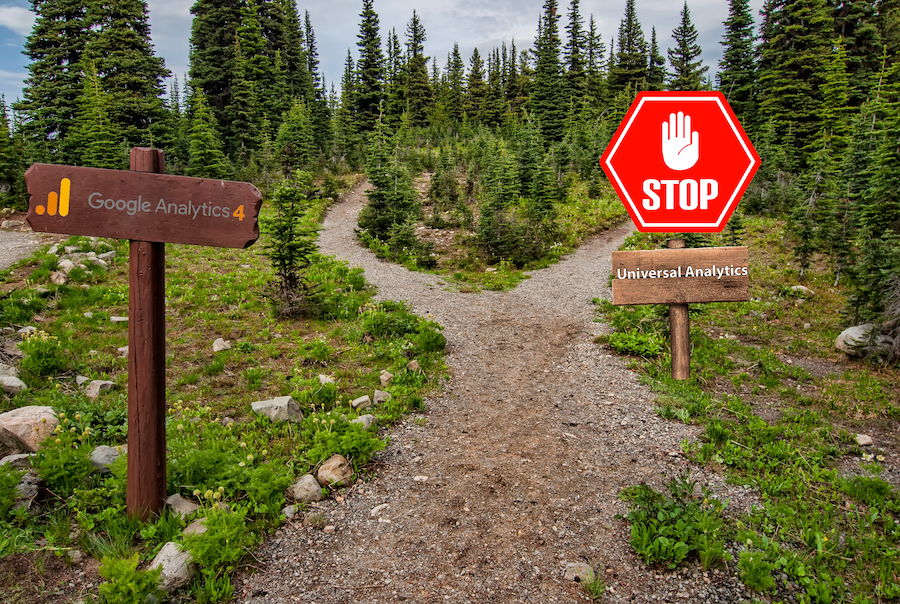
Introduction: Google Announces they are sunsetting Universal Analytics
E-Commerce business owners beware! The previous generation of Google Analytics – Universal Analytics or UA in short – will soon be sunset, Google announced today. What is still the most widespread version of Google Analytics used in e-commerce websites will become unusable starting July 1, 2023. This means that it’s only a matter of time before everyone is using Google Analytics 4 (aka GA4). GA4, which was first introduced in July 2019, comes with many changes. The data analysis is more granular, user-friendly, and up-to-date on privacy controls. We’ll get into some of that below while to explain the significance of this announcement!
Before we do, it is important to note that, for existing business owners, historical data cannot be transferred over from Google Universal Analytics to Google Analytics 4. However, there is no need to get worked up – universal analytics will be sunset only next year, meaning business owners can learn to leverage the perks of Google Analytics 4 alongside their Universal analytics account in the meantime. That means as you “learn the ropes” to leverage GA4, you can continue using your existing Google Universal Analytics account.
That being said, business owners will want to migrate sooner rather than later to Google Analytics 4 – learn about some of the key feature updates below!
Integration with All Device Across Web & Mobile
First, it’s important to note that Google Analytics 4 will streamline and consolidate user data from both web and mobile platforms. Google’s new system will empower business owners to track user data across each device they use, painting a more complete picture of user behavior.
Business owners used to need a Firebase and Universal analytics account to share data, but GA4 brings all the customer data from mobile and web under one roof. Multiple data streams – all from different devices and web apps – can be viewed together seamlessly.
No More Cookies
We know they sound cute, but user cookies are a key weakness in user privacy. At this point, they are basically archaic, and tightening user privacy laws will make cookie tracking technology obsolete within the next few years.
Google Analytics 4 gets out in front of this issue by preparing for this “cookieless world.” All data, while connected to a web ID for the user, is completely anonymized. Powerful software fills in the gaps when you are modeling user behavior, meaning businesses can still predict customer behavior effectively while not jeopardizing their personal data.
If you rely on third-party data to collect user info, it is time to get acquainted with Google Analytics 4. It will allow you to continue gathering valuable user data without endangering their privacy or coming across as an “invasive” online company.
Everything is an Event
While Google Universal Analytics struggled to patch together a coherent picture of user behavior, Google Analytics 4 treats every user action as an “event,” creating a constellation of user data that clearly tells a story through their online behavior.
Before, business owners had to essentially infer parts of user data because the data simply was not streamlined or categorized together. You had to pick through different data streams, identify the same user, and manually put together a picture of the user’s online behavior. With Google Analytics 4, every single event is tracked and stored in the same system.
For example, imagine a potential customer first checked out your site on a Facebook mobile ad. Then, after getting home from work, they visited your online website from their computer, where they “signed up” for an account and e-mail alerts. After that, later in the evening while browsing on their phone, they receive an email with a “special deal” and decide to download your business’s app to formally place their first order. Google analytics 4 would trace that entire series of decisions, recording each as a unique “event” that illustrates how users are discovering and utilizing your online business!
Furthermore, these user events are organized to provide advanced analysis reports and helpful data visualizations that far exceed the power of Google Universal Analytics. Purchase probabilities, funnel reports, custom audience segment overlap, visualizations of user activity down to the “per minute” detail are just some of the features business owners can now leverage with the release of Google Analytics 4.
Conclusion: Ad360 Can Help Businesses Migrate to GA4 & Fully Leverage New Features
Clients of Ad360 will receive support transferring data and migrating to the new Google Analytics 4 interface. While the new Google Analytics interface does look different, remember it serves the same purpose: helping online businesses increase sales and thrive in the e-commerce ecosystem.
This is a significant step forward in data privacy and user data analysis, and we are so excited to be at the forefront of the upcoming Google analytics revolution! If you want support when learning how to best leverage the new features of Google Analytics 4, reach out for a free call with Ad360 today!
Ecommerce Success hits 50 subscribers
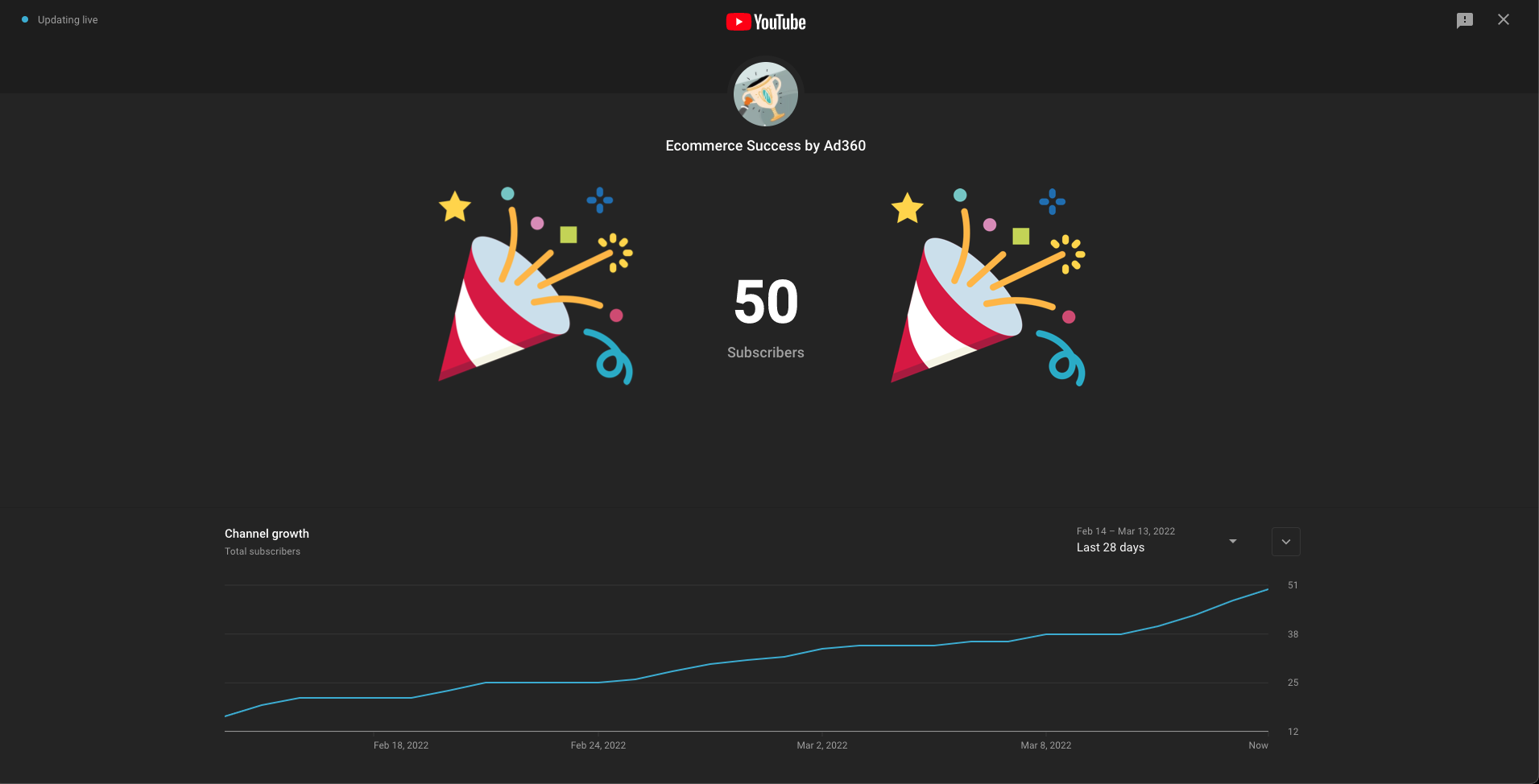
The “Ecommerce Success by Ad360” YouTube channel hits 50 subscribers!
Today we’re celebrating an important milestone for our YouTube channel.
“Ecommerce Success by Ad360” is a YouTube channel where we share tips, news, best practices to help business owners be happy, productive, and successful!
We make daily videos reviewing ecommerce businesses websites, giving them tips and advice to improve their conversions and better their marketing, advertising.
Making merchants happy and successful
Ad360’s mission is to make millions of merchants happy and successful. We take care of all your promotional activities, allowing you to focus on your passion & core business.
These videos are an important way for us to provide value, free advice and free website reviews to business owners. Our goal is to be informative, educational, while being useful as the same time, providing actional tips that e-commerce business owners can take home and implement right away.
We cover a variety of topics and discuss all things e-commerce, advertising, marketing, search engine optimization (SEO), conversion rate optimization (CRO), website design, branding, retargeting, social media, communication, and many other themes that could help businesses be more successful.
Sample Topics covered
Here are a few examples of videos we’ve made, to give you an overview of what you can learn from the YouTube channel:
Advertising
How much to spend on ads before you get sales
In this video we discuss about a business question on Reddit about how much they need to spend on ads before they get enough results to draw a conclusion.
https://youtu.be/4GZVrQU81RE
Money losing ad! What to do?
In the video, we’re discussing a few of the common advertising Key Performing Indicators (KPI) such as CPM, CPC, CTR. We’re giving a few tips to a Reddit post author to help them improve their ad results.
https://youtu.be/uM6TxGK9aNM
Homepage VS Product page? Which destination is best for advertising?
This video examines whether businesses should use their Homepage or Product page as a destination for their ads. We explain pros and cons of both, and why the best solution might be something else: a dedicated landing page. If you don’t know what this is, this video will go over the theory of why a landing page will outperform homepages and product pages.
https://youtu.be/aAyC2_7EseU
Marketing
3 marketing techniques to increase revenue
Successful companies like Apple or Netflix use these marketing rechniques all the time to increase their average order value (AOV) and sales: Value/pricing ladder, Price anchoring, Compromise effect.
https://youtu.be/loZtTmK5tps
Convert more by assuming your customer knows nothing
In the video, we’re discussing a few of the common advertising Key The concept of the “5 Levels of Awareness” by genius marketer Eugene Schwartz can really help you understand how to make your website better for the majority of your visitors, which will increase conversions.
https://youtu.be/g7w6h4KIDP0
Clueless about Website Traffic Generation
This video responds to a user on Reddit, asking for help with Website Traffic Generation. We cover different methods to generate traffic and how they can apply these to help their business grow: Search Engine Optimization (SEO), Social Media, Influencer Marketing, Advertising.
https://youtu.be/YiKaNWPU834
Search Engine Optimization (SEO)
What is Search Engine Optimization (SEO)
Introduction to the concept of SEO and how to get your website crawled, indexed, and delivered as a response to users’ queries on Google (and other search engines!).
https://youtu.be/yjoIgfjBYkg
Words Matter! Boost sales with descriptions!
Why Google still advises in 2022 website oweners to use more texts to improve your website’s content and make your pages more discovarable as search queries results.
https://youtu.be/IwzDRjBW7dA
New factors to rank on Google – Desktop page experience search signals
What are the new Core Web Vitals and other page experience signals that are now used by Google as a factor to determine how to rank pages for Desktop searches.
https://youtu.be/a2doaoYTTyY
Website Design
How to generate trust to increase e-commerce sales
This video reviews a website shared on Reddit and gives several general tips you can use to improve the website structure, design, content to improve conversion rates.
https://youtu.be/T7nGgTts5pY
Don’t lose customers because of colors
Colors can be a tricky topic because they can be seen as a matter of personal taste. However, there are design guidelines for accessibility and some colors combinations are more efficient than others. If you’re foreign to color theory, we share in this video a free online tool that can help you pick better color combinations in just a few minutes.
https://youtu.be/MzpUUF04exQ
Make your Ecommerce Website Stand Out
Standing out is key in a market where “10,000 alternatives to buy from are but a click away”. Hopefully, this video helps illustrate this key concept and gives a few practical tips about what can be done to make your website feel different, and convert more.
https://youtu.be/gtiDZYXu_Dc
Conversion Rate Optimization (CRO)
How to boost by up to 232% conversions by fixing CTAs
This video gives a few tips to this store owner to increase conversion rates by fixing the Call to Actions (CTA) buttons.
https://youtu.be/4HIov1ksii4
Why 75% of visitors abandon their carts
In this video we’re reviewing two studies about e-commerce statistics such as the cart abandonment rates, add to cart rates, conversion rates and average order values. Knowing key e-commerce statistics is important to gauge whether your business is doing fine or not, and which areas you need to focus on to improve your results.
https://youtu.be/aaLZoSsAEqk
85% Bounce Rate! How bad is it??
We give the definition of Bounce Rate and what the Google Analytics documentation teaches us about this topic. We also review a few tools that you can use to verify whether your website loads quickly, is responsive and mobile-friendly. These factors can impact bounce rate, as well as the ranking on Google, and are worth looking into.
https://youtu.be/cjn2Heyi460
Ad360 App Features Highlights
Public Release of Ad360 App for Shopify
This video announces that any Shopify user can install the Ad360 App for Shopify and grow their business with the easiest way to manage all promotional activities in one place.
https://youtu.be/-NX_bZcfXH8
What is Retargeting and why you must use it
In this video we’re talking about Retargeting, which is way too often overlooked by small businesses, whereas it is the most efficient form of advertising that you can do. Some studies say that Retargeting gets 1,300% Return on Investment (ROI). It’s definitely a big mistake not to employ it. Thankfully, we’re here to help you understand how to make the most of it, and get started with Retargeting thanks to Ad360!
https://youtu.be/YPr6V9rqPRg
Master hyper Local & Geo-targeted ads
We’re explaining why local-based ads are so important. We describe two advanced advertising techniques: Geotargeted ads & Hyperlocal ads. Both of these allow you to run ads that are personalized for specific areas, which will be more noticed and efficient to generate sales. Ad360 App for Shopify allows you to easily implement both of these techniques, in an easy way.
https://youtu.be/EIByOD0t9Cw
Get a free personalized review of your business
If you’d like help improving your website, and get a dedicated private call to review your e-commerce website, your marketing strategy and your advertising setup, feel free to book a consulting/audit call at any time on our website.